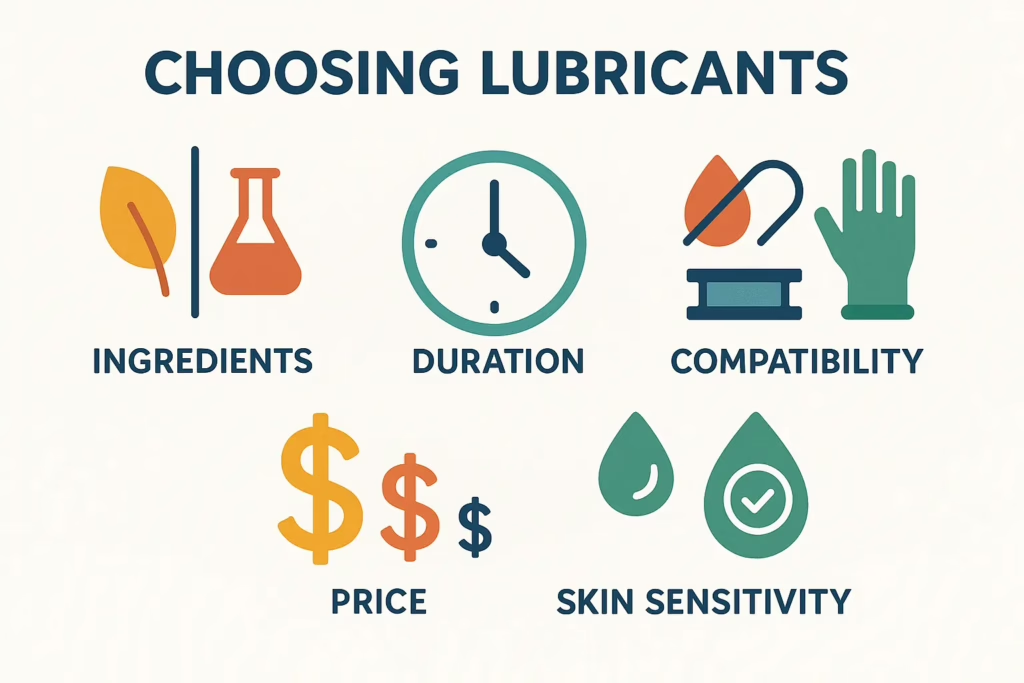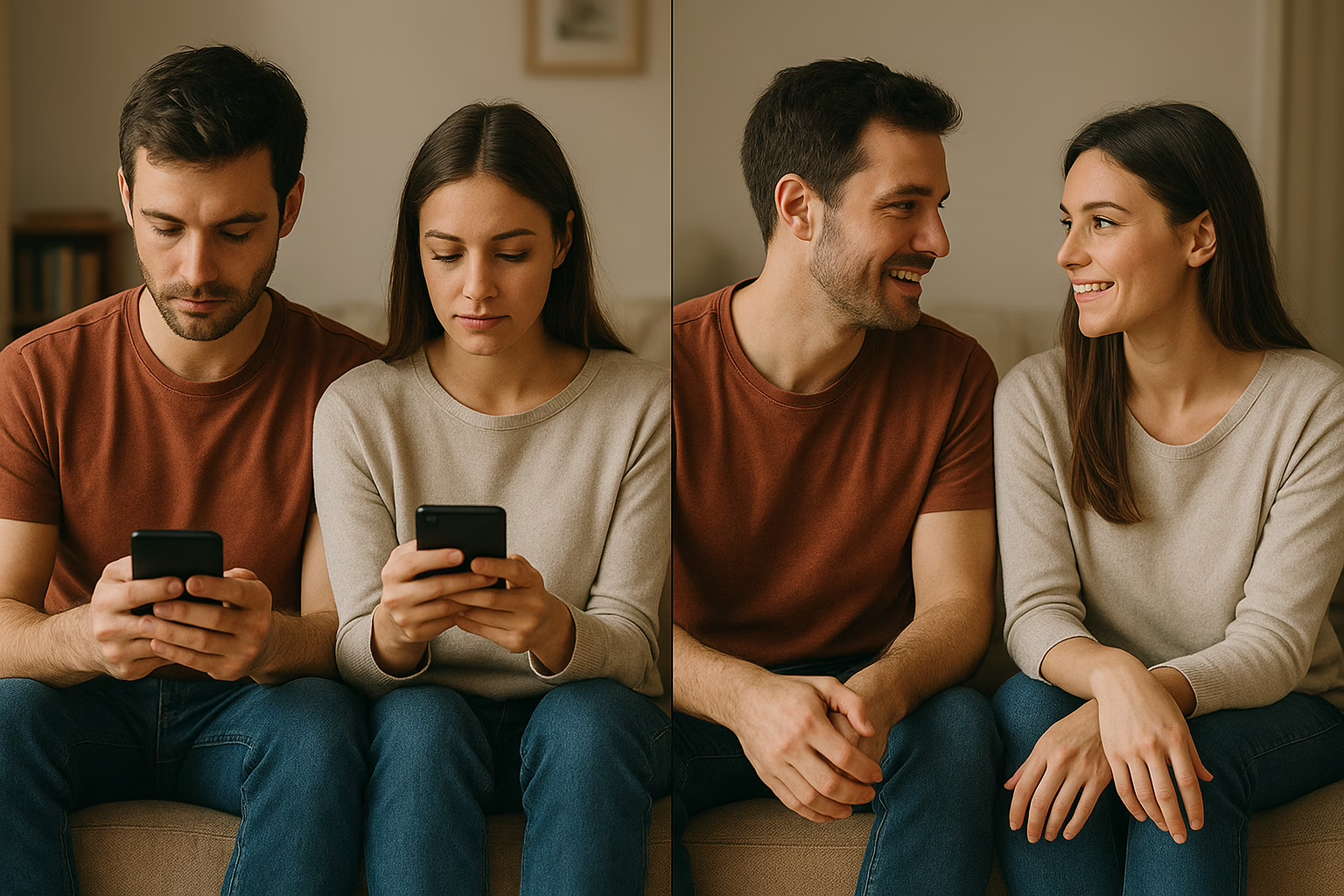
When was the last time you spent a full 48 hours without your phone? If you’re like most people, the answer is probably “never” or “not since smartphones existed.” As a couple who considers ourselves reasonably balanced with technology, we decided to test our assumptions by going completely phone-free for an entire weekend. What we discovered surprised us both and fundamentally changed how we view technology’s role in our relationship.
This isn’t another anti-technology manifesto or a call to return to simpler times. Instead, it’s an honest account of what happened when two modern adults voluntarily disconnected from their digital lives to see how it would affect their relationship, productivity, and overall well-being. The results were more profound than we expected, revealing habits we didn’t know we had and benefits we never anticipated.
Our couple no phone experiment started as curiosity but became a powerful relationship tool that we now recommend to any couple wondering about technology’s impact on their connection. Here’s exactly what we learned, what challenged us, and why we plan to make this a regular practice.
Why We Decided to Try the No-Phone Experiment
The Creeping Digital Intrusion
Like many couples, we didn’t realize how much our phones had infiltrated our relationship until we started paying attention. Small moments throughout the day were punctuated by notification sounds, quick checks for messages, and the unconscious habit of reaching for our devices during any brief pause in conversation.
We noticed patterns that concerned us:
- Conversations interrupted by “urgent” notifications that weren’t actually urgent
- Meals eaten while scrolling through social media
- Evening relaxation time spent on separate devices rather than connecting
- The immediate impulse to document experiences rather than simply experiencing them
The Research That Convinced Us
Studies on “technoference” – technology interfering with face-to-face interactions – show significant impacts on relationship satisfaction. Dr. Brandon McDaniel’s research found that even the mere presence of a phone can reduce the quality of conversations between partners. We wanted to test this theory firsthand.
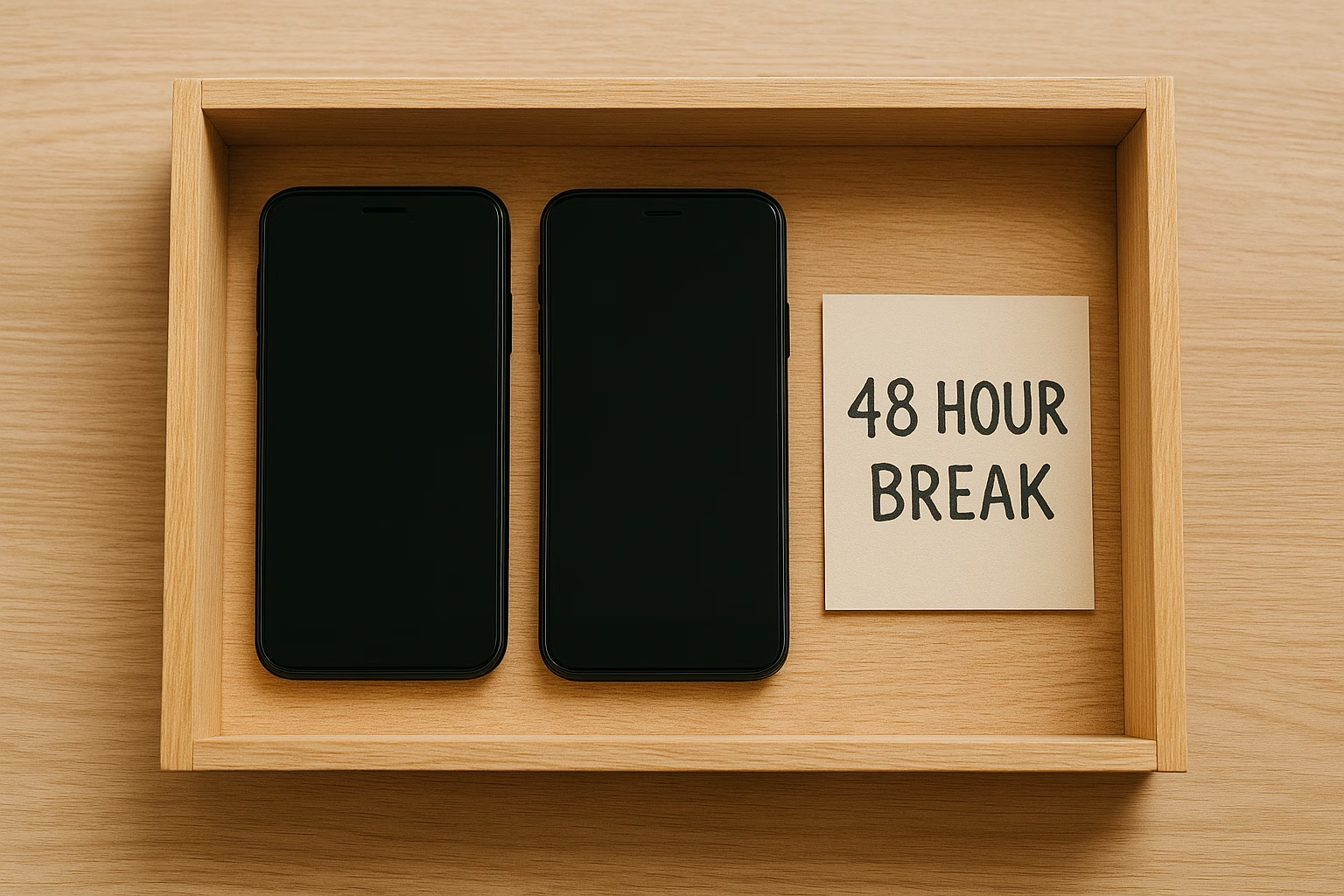
The Rules of Our 48-Hour Experiment
What We Eliminated
Complete Phone Shutdown:
- Phones turned off and stored in a drawer
- No checking for emergencies (we informed family of our experiment)
- No using phones for any purpose – clock, calculator, camera, music
- No smartwatches or other connected devices
Alternative Arrangements:
- Used an analog alarm clock we borrowed from a friend
- Told close family members we’d be unreachable but could contact our landline for true emergencies
- Prepared by writing down any important information we might need
- Arranged to use our old digital camera for any photos we wanted to take
What We Could Still Use
We weren’t trying to recreate the 1990s entirely, so we maintained access to:
- Laptop for essential work (but no social media or personal browsing)
- Television for planned viewing only
- Landline phone for emergency contact only
- Music through a CD player and radio
Hour-by-Hour: The First 24 Hours
Hours 1-3: The Phantom Vibration Phase
The first challenge was immediate and more intense than expected. Both of us experienced “phantom vibrations” – the sensation that our phone was buzzing when it wasn’t even on our person. We reached for our phones approximately every 15-20 minutes during the first few hours, a habit so automatic we weren’t conscious of it until the phone wasn’t there.
Unexpected Discovery: We realized how often we used our phones to fill micro-moments of boredom or transition time. Walking from room to room, waiting for coffee to brew, or during commercial breaks – our phones had become the default activity for any unoccupied moment.
Hours 4-6: Heightened Awareness
Without the constant option to escape into our devices, we became more aware of our immediate environment. Colors seemed more vivid, sounds more noticeable, and we found ourselves actually looking at each other when we spoke rather than making eye contact while mentally planning our next phone check.
Communication Changes: Our conversations became longer and more meandering. Without the ability to quickly Google facts to settle debates or reference something online, our discussions took on a more exploratory, philosophical quality.
Hours 7-12: The Anxiety Peak
This period was the most challenging. We both experienced a form of anxiety related to being “out of touch.” What if someone needed us? What if we missed something important? What if there was breaking news we should know about?
Practical Challenges:
- No GPS for navigation (we had to plan routes in advance)
- No instant access to restaurant hours, reviews, or menus
- No ability to quickly look up movie times or make last-minute plans
- No weather updates (we had to check outside or use the radio)

Hours 13-18: Finding New Rhythms
As the initial anxiety subsided, we began developing new patterns. Instead of checking our phones first thing in the morning, we lingered in bed talking about our dreams and plans for the day. Meals became leisurely affairs focused entirely on the food and each other’s company.
Unexpected Benefits:
- Meals took longer and were more satisfying
- We noticed details about our home we’d previously overlooked
- Physical intimacy increased naturally without the distraction of devices
- We rediscovered activities we’d abandoned: reading physical books, doing puzzles, playing cards
Hours 19-24: The First Deep Connection
By the evening of the first day, something significant shifted. Our conversation topics became deeper and more personal. Without the ability to distract ourselves with phones during awkward pauses, we pushed through to more meaningful dialogue.
We talked about:
- Childhood memories we hadn’t shared in years
- Future dreams and concerns we’d been too busy to discuss
- Our relationship patterns and how we’d changed over time
- Creative ideas and projects we’d been thinking about but never voiced
The Second Day: Unexpected Discoveries
Morning Without Digital Urgency
Waking up on the second day felt fundamentally different. Instead of immediately checking notifications, messages, and news, we woke up slowly and naturally. The absence of digital urgency created a calm that we hadn’t experienced in years.
New Morning Routine:
- Extended time talking in bed before getting up
- Breakfast became a lengthy, enjoyable meal rather than a rushed fuel stop
- We planned our day through conversation rather than checking calendars and apps
- Physical movement and stretching felt more natural and necessary
The Creativity Explosion
Without constant digital input, our brains seemed to generate more original thoughts and creative ideas. We found ourselves:
- Having ideas for home improvement projects
- Discussing book concepts and story ideas
- Planning future trips in detail
- Solving work problems through extended thinking rather than quick Google searches
Mental Space Discovery: We realized how much mental bandwidth was typically occupied by processing digital information, even when we weren’t actively using our phones.

Relationship Intimacy Breakthrough
The second day brought an unexpected level of emotional and physical intimacy. Without the option to retreat into individual digital worlds, we had to navigate boredom, awkwardness, and energy fluctuations together.
Intimacy Improvements:
- Longer, more frequent physical touch throughout the day
- Extended eye contact during conversations
- Increased patience with each other’s moods and energy levels
- More collaborative decision-making about how to spend time
Time Perception Changes
Perhaps the most surprising discovery was how differently we experienced time. Without constant notifications and the ability to quickly check the time on our phones, hours felt longer and more substantial. We accomplished more meaningful activities and felt less rushed throughout the day.
The Challenges We Didn’t Expect
Social Isolation Anxiety
Despite having each other, we both felt a form of social isolation anxiety. Modern social connection happens largely through digital channels, and being cut off from these networks felt more isolating than anticipated.
Decision-Making Difficulties
We hadn’t realized how much we relied on our phones for simple daily decisions. Without access to reviews, hours, directions, or quick fact-checking, choices that usually took seconds required much more deliberation and planning.
FOMO (Fear of Missing Out)
The fear that we were missing important news, social events, or opportunities was persistent throughout the experiment. This revealed how much our sense of connection to the broader world depended on digital information streams.

The Unexpected Benefits
Enhanced Problem-Solving Skills
Without Google as a crutch, we had to rely on our own knowledge, memory, and reasoning skills. This led to:
- More creative problem-solving approaches
- Extended discussions that deepened our understanding of topics
- Increased confidence in our own knowledge and intuition
- Better retention of information we figured out ourselves
Improved Sleep Quality
Both of us experienced significantly better sleep during the experiment. Without evening screen time and the mental stimulation of digital content, we fell asleep faster and felt more rested in the morning.
Rediscovered Attention Spans
We were surprised to find that our attention spans for single activities increased dramatically. We could read for hours, work on puzzles for extended periods, and have conversations that lasted much longer than usual without feeling antsy or distracted.
Physical Awareness
Without phones to distract us from physical sensations, we became more aware of:
- Hunger and satiety cues
- Physical tension and the need for movement
- Environmental factors like temperature and lighting
- Our partner’s physical presence and non-verbal communication
What We Learned About Our Relationship
Hidden Dependencies
The experiment revealed how much we’d come to depend on our phones to regulate our relationship dynamics. We used devices to:
- Avoid awkward silences
- Retreat when feeling overwhelmed by social interaction
- Share experiences immediately rather than processing them together
- Multitask rather than giving each other full attention
Communication Patterns
Without phones, our communication became:
- More direct and complete (no texting shortcuts)
- Less interrupted by external distractions
- More focused on emotional content rather than information sharing
- More patient and exploratory
Shared Experience Quality
Every shared experience felt more intense and memorable without the urge to document or share it digitally. We were fully present for:
- Meals and their flavors, textures, and aromas
- Conversations and their emotional nuances
- Physical activities and their sensory aspects
- Quiet moments and their peaceful quality
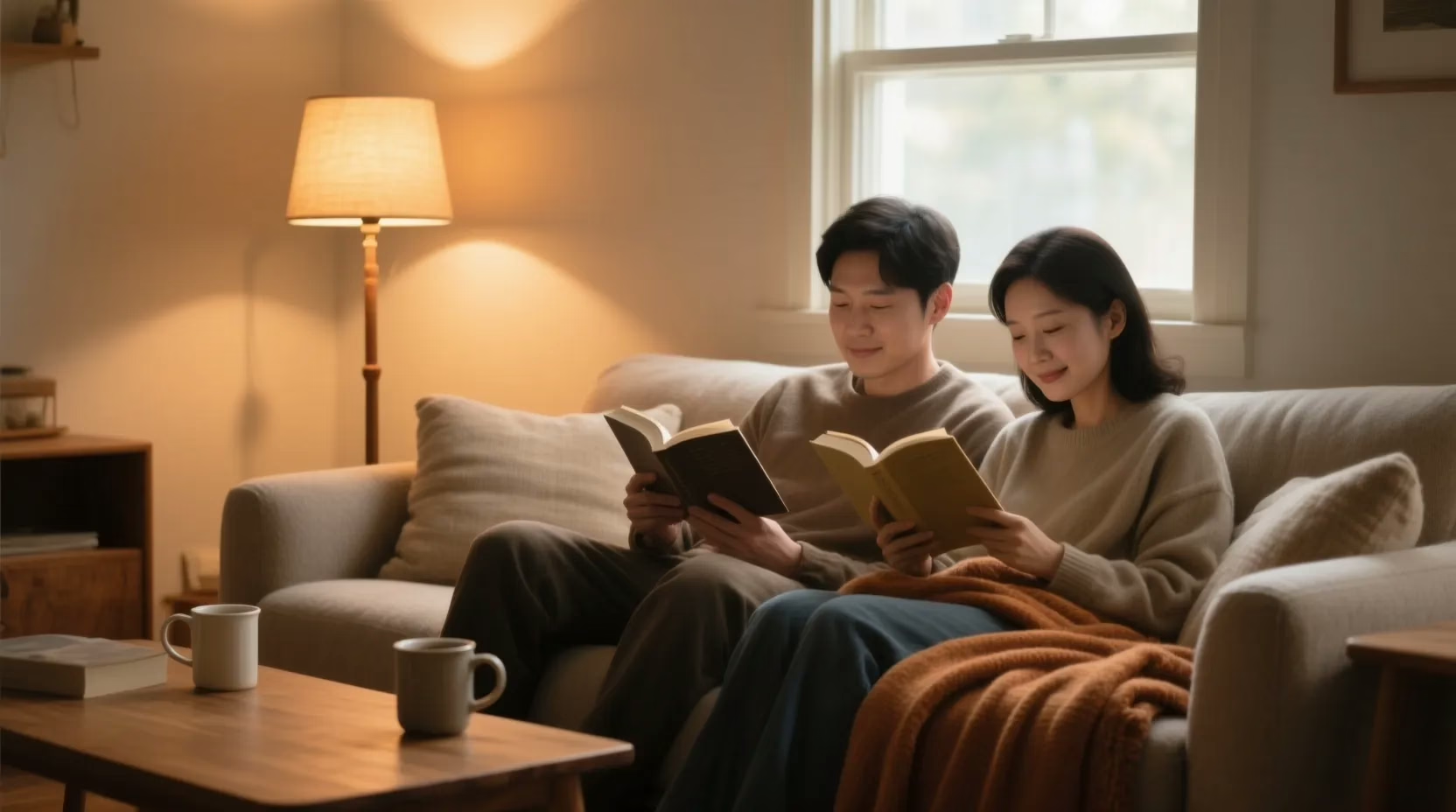
The Reintegration Challenge
Turning Phones Back On
After 48 hours, turning our phones back on was surprisingly jarring. The immediate flood of notifications, messages, and digital demands felt overwhelming after the peaceful simplicity of our phone-free weekend.
Reintegration Observations:
- We felt genuinely reluctant to return to constant connectivity
- The notification sounds seemed louder and more intrusive
- Catching up on missed messages felt less urgent than expected
- Most of what we’d “missed” was ultimately unimportant
Lasting Behavior Changes
The experiment created several lasting changes in our phone habits:
- We instituted regular phone-free meal times
- Evening phone shutdown became a routine practice
- Weekend morning phone delays became standard
- We became more selective about app notifications
Practical Tips for Your Own No-Phone Experiment
Start Small
If 48 hours seems daunting, consider starting with:
- Phone-free meals
- Device-free mornings (first 2 hours awake)
- Evening shutdown (2 hours before bed)
- One full phone-free day
Prepare Strategically
Essential Preparations:
- Inform family and friends of your experiment timeline
- Arrange alternative ways to handle true emergencies
- Plan activities that don’t require phones
- Gather analog alternatives (alarm clock, camera, maps)
Set Clear Boundaries
Define What’s Allowed:
- Emergency contact methods
- Work-related technology use
- Entertainment technology (TV, music, etc.)
- Duration and specific start/end times

Long-term Impact on Our Relationship
Monthly Digital Detox Ritual
The experiment was so beneficial that we now do a monthly 24-hour digital detox. These regular breaks help us:
- Reset our relationship with technology
- Reconnect with each other on a deeper level
- Maintain awareness of our digital habits
- Preserve the benefits we discovered during the original experiment
Changed Daily Habits
Permanent Changes We Made:
- All meals are phone-free zones
- Bedrooms remain phone-free during sleep hours
- We have a weekly 3-hour phone-free period for deep conversation
- Morning routines include 30 minutes without phones
Improved Relationship Satisfaction
The most significant long-term impact has been increased relationship satisfaction. We report feeling:
- More emotionally connected
- Better at communicating complex feelings
- More present during shared activities
- Less stressed about external demands on our attention
Scientific Research Supporting Our Experience
Studies on Digital Detox Benefits
Research supports many of the benefits we experienced:
- Improved sleep quality from reduced blue light exposure
- Enhanced creativity from decreased digital stimulation
- Better relationship satisfaction from increased face-to-face interaction
- Reduced anxiety from breaking notification addiction cycles
Technoference Research
Dr. Brandon McDaniel’s research on “technoference” confirms that phone presence alone can reduce conversation quality and relationship satisfaction – exactly what we experienced in reverse when we removed our phones.
Attention Restoration Theory
The improvement in our attention spans aligns with Attention Restoration Theory, which suggests that natural environments and reduced digital stimulation help restore our ability to focus deeply.
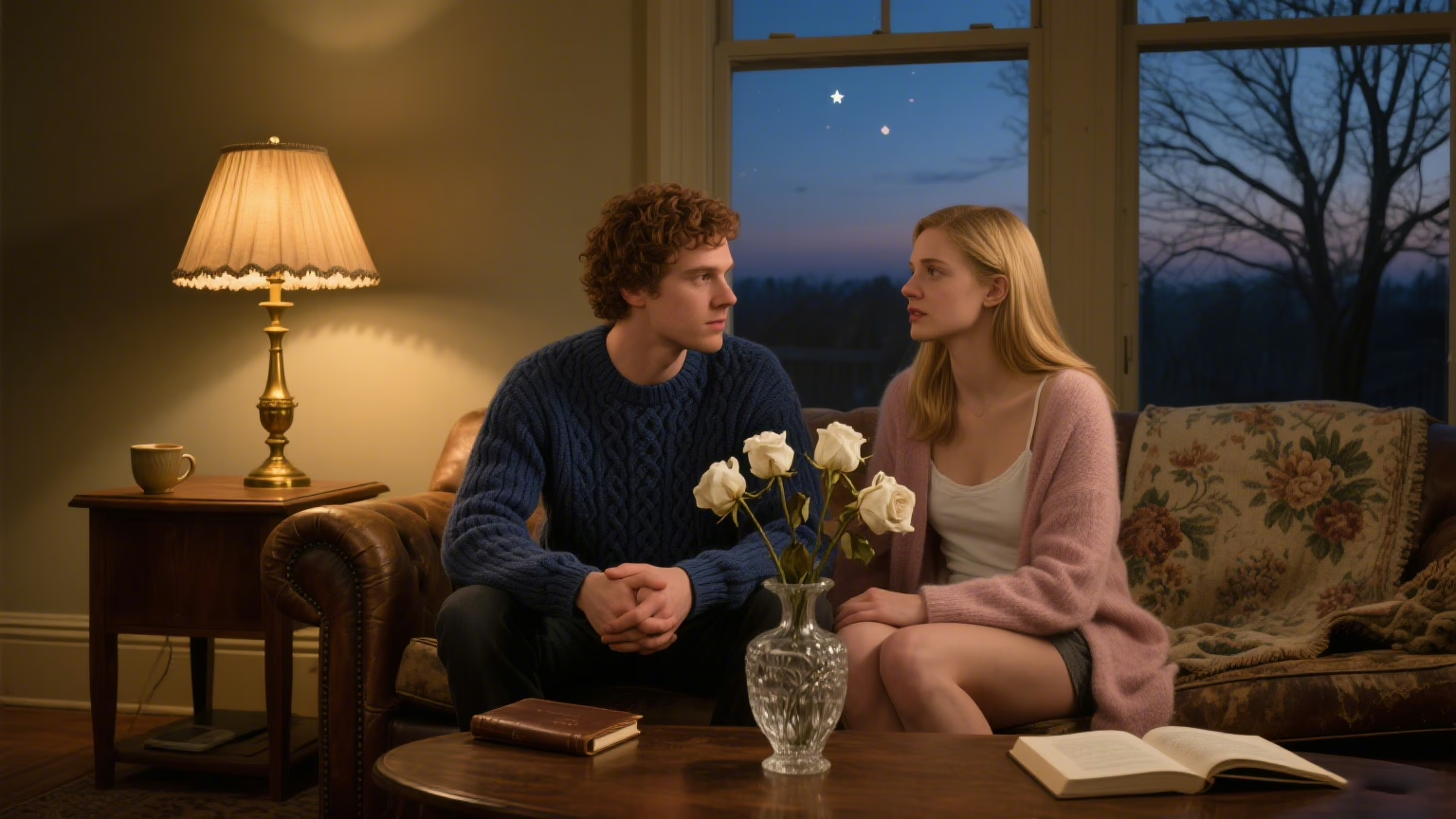
Addressing Common Concerns
“What About Emergencies?”
This was our biggest initial concern, but we learned:
- True emergencies requiring immediate phone response are extremely rare
- Most “urgent” situations can wait a few hours
- Having alternative contact methods (landline, trusted neighbors) provides adequate safety
- The anxiety about emergencies is often worse than the actual risk
“I Need My Phone for Work”
For work-related concerns:
- Choose experiment timing during off-hours or vacation days
- Use a computer for essential work tasks only
- Set up email auto-responders explaining your temporary unavailability
- Most work communication can be delayed without significant consequences
“What If I Get Bored?”
Boredom was actually one of the most valuable parts of the experiment:
- It forced us to find creative solutions for entertainment
- We rediscovered activities we’d forgotten we enjoyed
- Boredom led to some of our most meaningful conversations
- Learning to be comfortable with boredom reduced our need for constant stimulation
Variations of the No-Phone Experiment
The 24-Hour Mini Version
For those hesitant to commit to 48 hours:
- Start Friday evening and end Saturday evening
- Focus on one full day of phone-free living
- Still provides significant benefits and insights
- Easier to manage logistically
The Social Media Only Detox
If complete phone elimination seems impossible:
- Keep phones for calls and texts only
- Remove all social media and entertainment apps temporarily
- Still allows emergency contact and basic communication
- Reduces digital overwhelm while maintaining connectivity
The Evening-Only Experiment
For regular practice:
- Phone-free from 6 PM to 9 AM
- Allows work and daytime communication
- Focuses on improving relationship time and sleep quality
- More sustainable for long-term practice
Results That Surprised Us Most
Increased Physical Intimacy
Without phones as a retreat option, we naturally increased physical touch throughout the day. Hand-holding, cuddling, and spontaneous affection became more common and felt more natural.
Enhanced Emotional Intelligence
We became better at reading each other’s moods and emotional needs without the distraction of digital stimulation competing for our attention.
Improved Decision-Making
Major decisions felt easier to make when we could give them our full attention without the constant input of external information and opinions.
Greater Life Satisfaction
Both of us reported feeling more satisfied with our lives and relationship after just 48 hours of digital disconnection.
Making It a Lifestyle Change
Regular Practice Schedule
Based on our success, we now maintain:
- Monthly 24-hour detoxes for relationship renewal
- Weekly 3-hour phone-free periods for deep conversation
- Daily phone-free meals for better connection
- Evening phone shutdown for better sleep and intimacy
Community Support
We’ve found that sharing our practice with friends creates accountability and encouragement. Several couples in our social circle now do their own versions of digital detoxes.
Adapting to Life Changes
As our lives evolve, we adapt our phone-free practices:
- During stressful periods, we increase phone-free time
- When traveling, we maintain some phone-free hours
- During relationship challenges, we use extended detoxes as reset opportunities
Conclusion: The Relationship Revolution We Didn’t Expect
Our 48-hour no-phone experiment began as curiosity but became a relationship revolution. We discovered that constant connectivity had been subtly undermining our connection to each other in ways we never recognized. The experiment didn’t just show us the negative impacts of constant phone use – it revealed the positive potential that emerges when we choose presence over productivity, depth over breadth, and quality over quantity in our shared attention.
The most profound realization was this: we had been living parallel digital lives while physically together, missing opportunities for the kind of deep connection that makes relationships thrive. The experiment reminded us that love grows in the spaces between distractions, in the moments when we choose to be fully present with each other.
We’re not advocating for a return to pre-digital life or suggesting that technology is inherently harmful to relationships. Instead, we’re sharing evidence that intentional breaks from connectivity can dramatically improve relationship quality, individual well-being, and overall life satisfaction.
If you’re curious about technology’s impact on your relationship, we encourage you to try your own version of this experiment. Start small, plan carefully, and approach it with curiosity rather than judgment. You might discover, as we did, that the most connected you can feel is when you’re temporarily disconnected from everything except each other.
The phones will always be there when you return. The question is: what connection opportunities might you be missing while they’re always in your hand?


